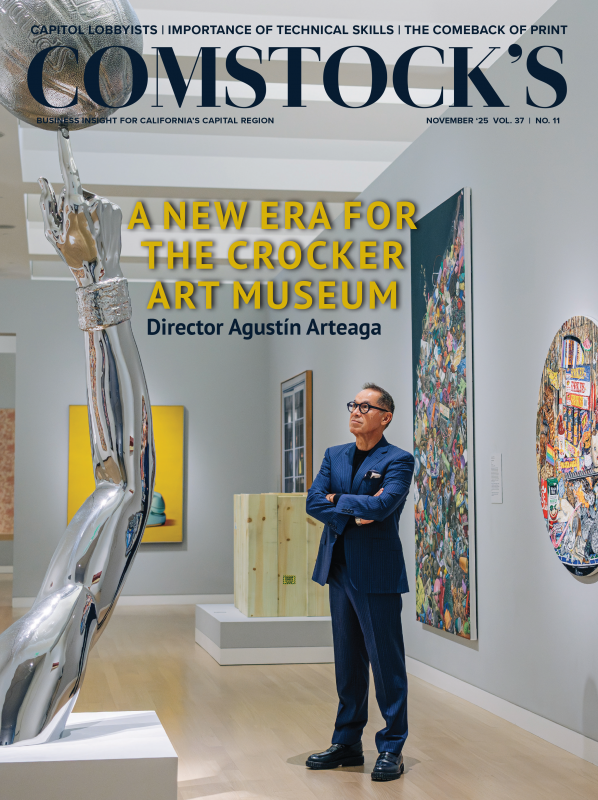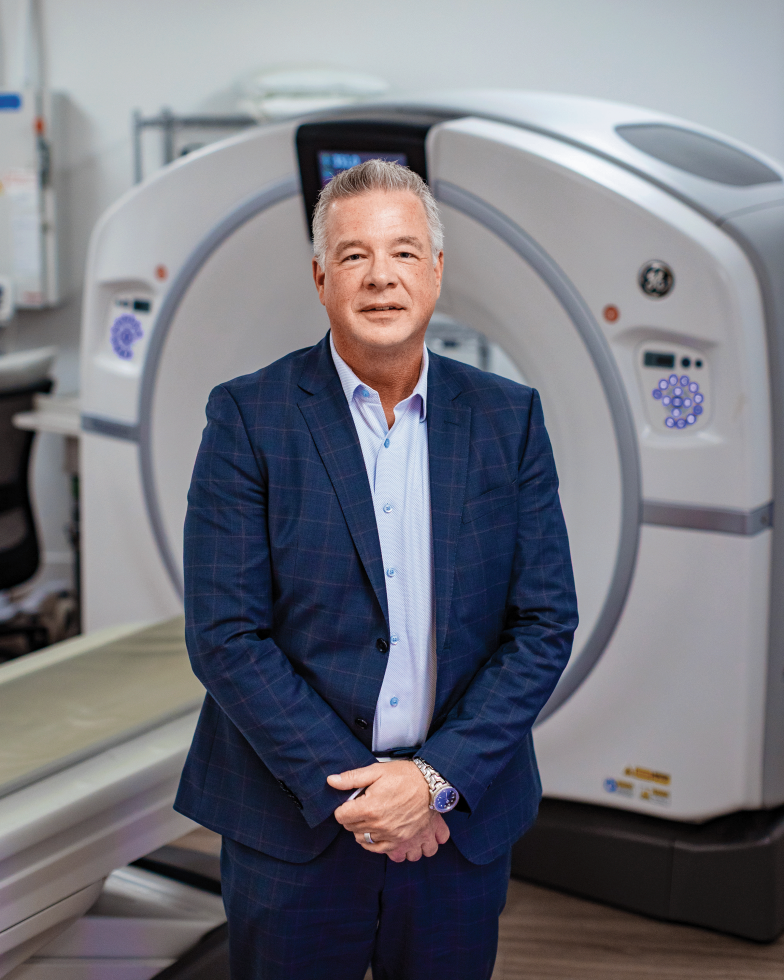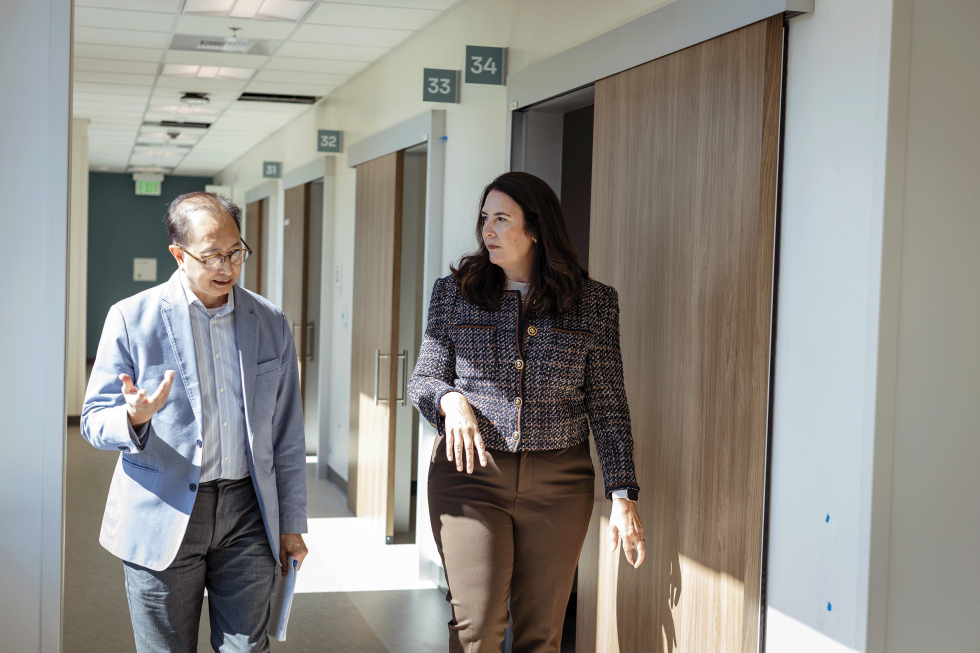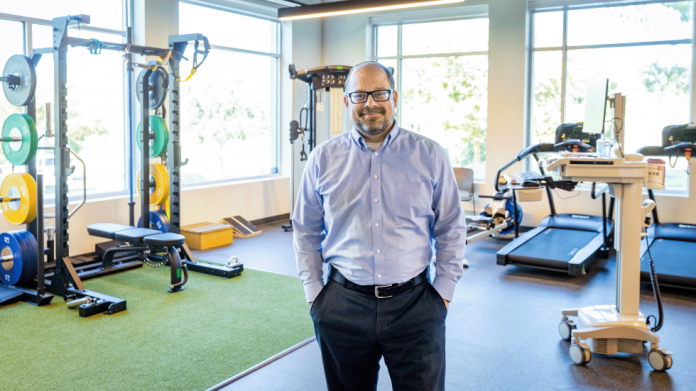
This story is part of our November 2025 issue. To read the print version, click here.
When Ellen Pensky McGraw went in for her annual mammogram, she
didn’t give it a second thought. After decades of standard
screenings with no issues, she expected the same results.
“It was very routine for me, and I wasn’t worried at all,” she
says.
But this time was different. The radiologist noted a small lump
in her left breast and recommended a follow up. “They assured me
the lump was small and could probably be removed with a
lumpectomy,” she recalls.
She scheduled a follow-up appointment but received little
guidance on what to do next. “There was no sense of urgency,” she
says. “It was the most terrible experience that I’ve ever been
through.”
One of her doctors asked if she had ever had a breast MRI or
genetic testing. No one had mentioned those options to her
before. She learned that doctors typically avoid bringing them up
because of the cost. Pensky McGraw chose to get both anyway. The
MRI revealed the cancer was in both breasts and more advanced
than initially thought, and genetic testing confirmed she carried
a breast cancer gene.
“If I had known about these options earlier, I would have done
them years ago,” she says.
A recent transplant from the Bay Area, Pensky McGraw faced a
choice: continue with a health care system that left her feeling
lost and frustrated, or find better care. She chose the latter.
An anesthesiologist friend helped her get a referral to a Sutter
Health doctor, and she secured an appointment the next day.
“I will never forget what my doctor told me after hearing my
story. He said, ‘I’m going to take care of you; I will figure
this out.’ And he did. He got me on my treatment path the very
next day,” she says.
Following her recovery, Pensky McGraw joined the board of the
Sierra Cancer Wellness Foundation, where she now uses her
experience to teach women to advocate for themselves — and to
understand they have options.
Adapting to a growing population
Pensky McGraw’s story underscores the complexity of navigating
health care in the growing Capital Region. Home to some of
California’s most comprehensive health care systems, the region
is also grappling with unprecedented demand. An influx of new
residents — like Pensky McGraw — has led major providers
including Sutter Health, Dignity Health, UC Davis Health, Kaiser
Permanente and Marshall Medical in El Dorado County to accelerate
expansion plans.
The population surge has been swift. According to U.S. Census
data, the Capital Region added about 100,000 new residents
between 2020 and 2024. Projections estimate another 580,000
people by 2050, pushing the population past 3 million.
To meet demand, health systems are rethinking how and where care
is delivered.
Related: Boom From the Bay: The
influx of high-skilled workers is boosting Sacramento’s economic
prospects
“We’ve really embarked on an enterprise-wide expansion plan to
respond to the demand for our services,” says Rachael McKinney,
president of Sutter Health’s greater Sacramento division. She
points to three key drivers: rapid population growth, shifting
care delivery models and an aging population that requires
managing chronic disease.
One major shift is moving services out of hospitals and into
outpatient, community-based settings.
“We’re thinking about how we should be delivering care that is
close to home for patients where they live, work and play,”
McKinney says.
Sutter Health is renovating a 70,000-square-foot multi-specialty
Arden Care Center that will include primary care, urgent care and
other outpatient services. It’s set to open in December 2025. Its
Folsom care complex will feature a new cancer center opening in
2027, and downtown Sacramento will see the launch of a center of
excellence care facility for advanced orthopedics and sports
medicine. Sutter is also testing retail-facing urgent care
centers, starting with one in Rocklin, with plans to replicate
the model in Elk Grove and West Roseville.
Hospital capacity is expanding as well: Sutter Roseville Medical
Center added 24 acute care beds and 12 ICU beds, while
Sacramento’s Sutter Medical Center will add 30 medical surgical
beds and 12 ICU beds by late 2026.
UC Davis Health is also focused on expanding access closer to
where patients live.
Dignity Health Market President Robert Marchuk stands in front of
one of the imaging machines.
“We’re trying to be more convenient and in
more neighborhoods where people live and work and minimize their
drive time,” says Mike Condrin, interim CEO for UC Davis Health.
Construction is underway for the massive 14-story, $3.75 billion
UC Davis Health California Tower next to the medical center that
will feature 334 private rooms. The one million – square – foot
building is expected to be completed in 2030.
In September, UC Davis Health opened a new three-story,
114,000-square-foot medical care clinic in Folsom that
consolidates three existing facilities. It now offers primary and
specialty care and expanded services including radiology,
cardiology, oncology and a state-of-the-art infusion center. In
downtown Sacramento, a new surgical complex opened at 48th and X
Streets with 20 operating and procedural rooms, reinforcing the
shift toward outpatient care without sacrificing specialty
services.
Marshall Medical, which serves El Dorado County, opened a walk-in
orthopedic clinic in El Dorado Hills in August. The clinic offers
same-day X-rays, orthopedic consults and surgical assessments —
often at lower costs and faster timelines than emergency
departments. It also expanded its physical therapy department
with an emphasis on sports medicine in response to the population
shift and aging demographic. The health system plans to build out
the second floor of the clinic with additional specialty care
services.
For patients like Lori Schonert, a retired Cameron Park resident
recovering from a fall, the new facilities make a difference. She
has been receiving physical therapy for her shoulder at the El
Dorado Hills clinic. Her therapist, Kimmy Reid, gave her hope
after just one session.
“I felt very discouraged and wasn’t sure that physical therapy
would even work,” she explains. “Kimmy listened to me and
adjusted my treatment based on my health history. After only one
session, I was surprised at how much my range of motion was
better and my pain was a little less.”
Related: The
Capital Region Is in the Vanguard of Autism Research and
Treatment
The clinic will soon be adding a groundbreaking tool called
ZeroG, a dynamic body-weight support system that builds patient
confidence during therapy.
Dignity Health is also making significant investments in its
ambulatory footprint in response to the region’s population
explosion.
The health system recently opened a new imaging center in Folsom
that integrates primary care, pediatrics, oncology infusion and
radiology. In Elk Grove, a new Express Primary Care clinic with
extended hours and weekend availability offers care that bridges
the gap between urgent care and traditional primary care. An
additional express clinic is also available in Roseville.
“We have plans to spread that model in multiple communities,”
says Rob Marchuk, Dignity Health’s physician enterprise president
for the Sacramento market. Dignity Health has also announced
plans to build a full-service hospital in Elk Grove — a first for
the city.
Kaiser Permanente is similarly expanding, adding a 138-bed
hospital tower and 36 emergency room beds at its Roseville
Medical Center. An urgent care clinic in Folsom will open in
spring 2026, with plans for a comprehensive care center in Folsom
as well. Earlier this year, the health system broke ground on its
new all-electric Railyards Medical Center in downtown Sacramento
— a modern, 310-bed hospital set to open in 2029. The eight-story
facility, complete with a five-story parking garage, will replace
the aging hospital on Morse Avenue. The project also marks the
return of labor and delivery and maternal-child services, which
had previously been discontinued.
In neighboring San Joaquin County, work is underway on a major
behavioral health investment. The county broke ground on the $261
million, 18-acre SJ BeWell Campus, located near San Joaquin
General Hospital. The South Campus will provide a continuum of
behavioral health and substance use disorder care. A planned
north campus will expand outpatient and residential programs,
with added services for families and youth.
Responding to the silver tsunami
The Sacramento region’s population is not just growing — it’s
aging. The number of residents aged 65 and older grew by more
than 50 percent between 2010-2020, the fastest in 130 years.
Health systems are responding. UC Davis Health has opened a
healthy aging clinic in Midtown Sacramento and is expanding
cancer care access in suburban areas like Folsom and Rocklin.
Rachael McKinney, president of Sutter Health’s Greater Sacramento
Division, said the health care agency is now dealing with
population growth, aging parents and shifting ways they can
deliver care. Here she is with Teague Ho, facilities project
manager for Sutter Health.
UC Davis Health’s Condrin uses his father’s experience to
underscore the importance of these shifts.
“He used to have to drive from El Dorado Hills to the cancer
center in downtown Sacramento multiple times a week. Now patients
can get infusions in Folsom, so it’s a much shorter drive for
most of the routine cancer care,” he says.
Kaiser has partnered with Habitat Health to launch a new PACE
(Program of All-Inclusive Care for the Elderly) center in the
Arden-Arcade area of Sacramento, designed to provide wraparound
services for older adults. The center offers a wide range of
services under one roof, including a gym, physical therapy,
nutrition classes, a primary care physician and opportunities for
social connection. There’s even an onsite hair salon.
Related: When the Sun Sets on the
Golden Years: The hardship and high cost of caring for a loved
one in decline
“It’s like a drop-in center for our elderly patient population,”
says Jay Robinson, senior vice president and area manager for
Kaiser Permanente Sacramento and South Sacramento.
Dignity Health is also investing in aging care, with an
ambulatory surgery and urgent care center with extended hours in
Folsom Ranch. Sutter Health is evaluating new Sutter Senior
Clinics that focus on managing chronic conditions through
specialized primary care.
In El Dorado Hills, Marshall Medical is working with the Blue
Zones initiative (places in the world with the healthiest,
longest-living populations) to promote community health and
longevity.
“It’s a multi-year project, and we’re just one small piece of the
puzzle working to promote health and well-being so that people
can age gracefully and stay active and connected to the
community,” says Jonathan Russell, Marshall Medical’s chief
ambulatory officer.
Russell notes that the aging population, particularly in El
Dorado and Sacramento counties, combined with a nationwide
shortage of physicians and allied health professionals, is posing
a significant challenge for all health systems.
Marchuk of Dignity Health agrees and believes the nationwide
shortage stems from deeper system issues. He points to the need
for more educational pathways.
“I don’t think we have enough schools in this county, enough
training programs to meet the demand. That’s number one,” he
says. “And being a physician has changed over the last 30 years.
We can grow the programs and keep the same quality and rigor, but
not everyone wants to work 24/7 anymore. New graduates coming out
of residencies and fellowships are also looking for that quality
of life.”
Despite those challenges, Dignity Health has been able to
prioritize physician recruitment and successfully recruit 60 new
physicians to the region. Through its involvement in the
Sacramento K16 Collaborative, Kaiser Permanente is also helping
build education-to-career pipelines in health care. To support
allied health staffing, Marshall Medical opened a medical
assisting school in Cameron Park.
Related: The New Age of
Aging: Developers in the Capital Region are building new models
of senior housing — in preparation for the ‘silver tsunami’ to
come
“We noticed there was this underserved population of health care
professionals, so we’re proud to be able to offer that to the
community,” says Russell.
Competitors and collaborators
Though Sacramento’s major health systems often compete, they also
collaborate. They meet quarterly to share insights on emerging
technologies, such as robotics and AI in charting and electronic
health records, and to tackle shared challenges such as rising
patient demand, persistent workforce shortages and federal
funding.
“The thing that’s unique about Sacramento is that I have very
good relationships with the other health system leaders,” says
McKinney. “I call it ‘coopertition.’ We’re competitors, but we
cooperate on a lot of community-related partnerships to better
serve the community.”
Robinson agrees, saying, “It’s absolutely refreshing to be able
to meet and talk about opportunities and problems we all have in
common.”
–
Stay up to date on business in the Capital Region:
Subscribe to the Comstock’s newsletter
today.






